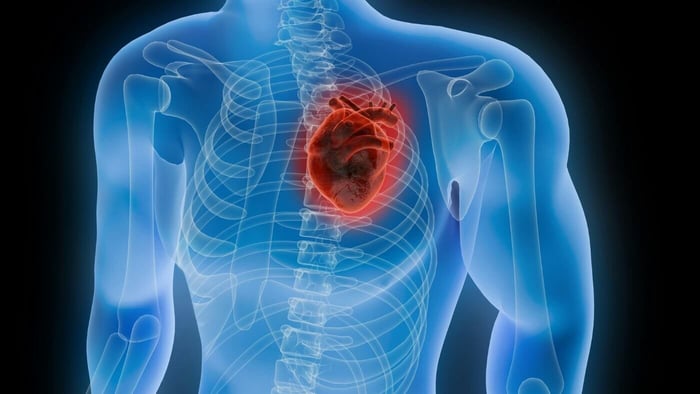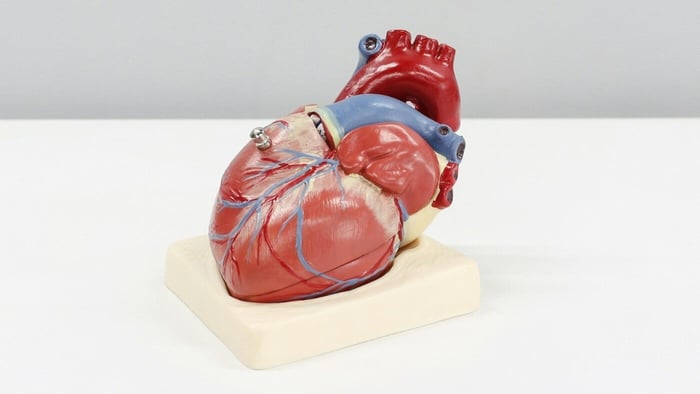Table of Contents
LDL particle size refers to the physical proportions of LDL cholesterol particles in your arteries. Recent research is revealing that LDL particle size more accurately predicts heart disease than the conventionally accepted biomarkers of LDL cholesterol levels. (1)
Many mainstream researchers see HDL cholesterol as “good” cholesterol, while LDL is “bad.” However, it’s not quite that simple. Keep reading to learn why LDL cholesterol particle size is the best biomarker for cardiovascular disease, plus how to test for particle size.
Try Toku Flow from Toku Health to promote overall cardiovascular wellness and healthy circulation.
Why Particle Size Matters
High levels of low-density lipoprotein (LDL) and very low-density lipoprotein (VLDL) are risk factors for coronary artery disease, myocardial infarction, and other heart issues. But it’s not the total LDL levels that count so much as the LDL particle size.
LDL cholesterol (LDL-C) particle size matters because the smaller the size, the easier it is for the particles to penetrate and get trapped in artery walls, increasing your risk for cardiovascular disease (CVD). Small particles are also higher in density and more likely to accumulate in your blood vessels.
Large, fluffy, buoyant LDL-C particles are less likely to accumulate in your arterial walls or lead to coronary heart disease and other CVDs.
Measurements and Classification
The average size of LDL particles is around 25.6 nanometers (nm). (2) Researchers define the following ranges:
Large — 26.0 to 28.5 nm (3)
Intermediate — 25.5 to 26.4 nm (3)
Small — 24.2 to 25.5 nm (4)
Very small — 22.0 to 24.1 nm (4)
Factors That Affect LDL
The most common risk factors for smaller, denser LDL particle size are as follows:
Genetics: Decades of studies show that peak LDL particle size is partly determined by genetic factors. A familial history of small particle size puts you at higher risk of CVD. (5)
Diet: A high-fat diet may increase total cholesterol levels, but more importantly, it has been shown to increase LDL particle size. (6)
Physical activity: One study went so far as to say exercise does not decrease LDL levels, yet it clearly increases LDL particle size and reduces the number of small, dense LDL particles. (7)
Insulin resistance: Research published in the American Heart Association concludes that greater amounts of small, dense LDL particles are associated with insulin resistance, a leading cause of diabetes. (8)
Testing
In order to test your LDL particle size, you likely need advanced lipid testing. Make sure the lipid measurements include the particle size, not just high or low HDL or LDL particle number. However, particle size testing is less common than other effective CVD biomarker tests.
With the current technology, the three best diagnostics for cardiovascular disease are advanced lipid testing, ApoB, and Lp(a) tests.
Advanced lipid testing should include LDL particle size. The larger the size, the better. You want buoyant, fluffy particles, not small, dense particles.
ApoB testing measures the amount of apolipoprotein B in your blood. Since each atherogenic particle (e.g., LDL, Lp(a), intermediate-density lipoprotein) contains one ApoB molecule, this test provides an accurate count of all the cholesterol particles that contribute to cardiovascular disease. (9)
Lp(a) testing measures lipoprotein (a), which is a cholesterol-carrying particle and major risk factor for CVD. (10) It’s like LDL but with an additional protein, ApoB, making it more likely to clog up your arteries.
These biomarkers are the cutting-edge predictors and diagnostics for cardiovascular disease. Unfortunately, conventional doctors and pharmaceutical companies will likely look at total LDL levels as the primary biomarker of heart disease for years to come.
Strategies for Improving LDL Particle Size
Since larger LDL particles are beneficial for cardiovascular health, let’s talk about the best strategies for improving LDL particle size.
Exercise Regularly
Daily aerobic exercise has a lot of whole-body health benefits, including fighting metabolic syndrome, but let’s focus on the benefits to your LDL particle size.
First of all, regular exercise plays an important role in causing cholesterol particles (both LDL and HDL) to shift from small to large. (11)
Secondly, chronic inflammation is associated with small LDL particle size; exercise is widely known to lower inflammation and thus increase particle size. (12, 13)
Eat Healthy
Make dietary changes that prioritize your heart health and reduce inflammation. Restricting carbohydrates (especially refined carbs) and increasing healthy fat intake seems to increase LDL particle size, thus decreasing the risk of heart problems. (14)
Aim for anti-inflammatory foods and antioxidants that prevent small, dense LDL particles in the first place. Blueberries, avocados, leafy greens, fatty fish, nuts, seeds, and green tea are all known for their anti-inflammatory and antioxidant properties.
Avoid Smoking And Drinking
Smoking (tobacco or vaping) and drinking alcohol have deleterious effects on your systemic health, including your cardiovascular health.
Smokers have denser, smaller LDL particles than non-smokers. These effects linger after quitting smoking, so quit now and keep finding ways to detox and decrease inflammation. (15)
Alcohol is a neurotoxin that also impacts heart health. Non-drinkers have large LDL particle size compared to alcohol drinkers, but only heavy drinking has widespread evidence of cardiovascular detriments. (16)
Moderate drinking (1 drink/day for women, 2 drinks/day for men) has been associated with larger particle size and a decreased amount of small, dense particles. (17) However, even mainstream institutions like the CDC and WHO have recommended never drinking any alcohol. (18, 19)
Consider High-Quality Supplements
There are specific dietary supplements that can increase LDL particle size and improve your lipid profile:
Niacin (vitamin B3) has been shown to increase LDL particle size and reduce other heart disease biomarkers, including Apo B and triglyceride levels. (20)
Omega-3 fatty acids are a healthful fat that increases LDL and HDL particle size, plus they significantly reduce the risk of all cardiovascular events. (20)
Berberine is an herbal supplement that supports heart health in part by increasing LDL particle size and reducing the number of small, dense LDL-C particles. (21)
Curcumin is found in turmeric, but curcumin extract is concentrated enough to promote anti-inflammatory heart health benefits by increasing LDL particle size and improving blood vessel performance. (21, 22)
Nattokinase is a unique enzyme (nattokinase supplements are available in various forms) that supports cardiovascular health through its fibrinolytic activity and by helping maintain normal blood pressure, lipid metabolism, and platelet function. (23)
Read Next: The Top 9 Evidence-Based Supplements for Heart Health
FAQs
How do high cholesterol levels increase stroke risk?
Yes, high cholesterol levels (hypercholesterolemia) may lead to an increased risk of stroke, though we would argue cholesterol particle size is more indicative of stroke risk than total cholesterol levels.
When your cholesterol levels are high, small-sized lipoproteins in your bloodstream may penetrate the walls of your blood vessels and cause plaque formation that can block blood flow, including blood flowing to the brain. A stroke is a lack of blood flow to the brain.
Can hypothyroidism increase the risk of statin intolerance?
Yes, hypothyroidism (underactive thyroid gland) increases your risk of statin intolerance. Statins are the conventional medical treatment for high cholesterol, though we do not recommend statins as a first-line treatment due to their low effectiveness and numerous adverse effects. (24)
Learn More: Best Statin Alternatives
The Takeaway
Conventional doctors and researchers demonize LDL cholesterol as the “bad cholesterol.” But it’s not so simple. What’s more important than LDL levels is LDL particle size.
If you have a lot of large, fluffy, buoyant LDL particles, you’re at lower risk of clogging your arteries. But smaller, denser LDL particles are more likely to penetrate arterial walls and lead to cardiovascular events, including heart attack and stroke.
Check out Toku Flow to help maintain healthy LDL particle size and overall cardiovascular wellness.




